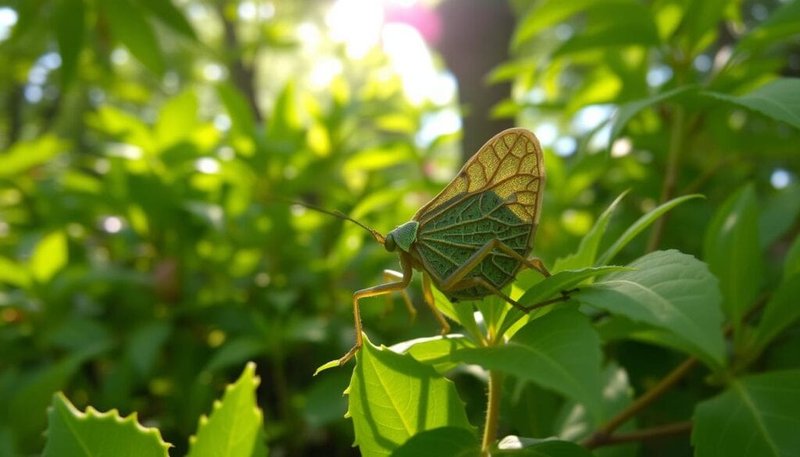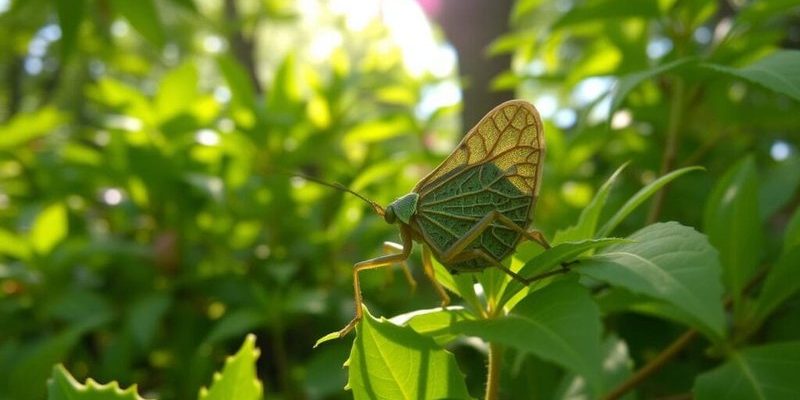
Inchworms are actually the larvae of certain moth species. They move in a distinctive way that resembles the action of measuring something—hence the name “inchworm.” Despite their small size, these interesting little beings have developed an impressive set of skills to survive in the wild. In this article, we’ll peel back the layers of how inchworms use camouflage, explore the different techniques they employ, and discover the reasons behind their cleverness.
What Is Camouflage and Why Is It Important?
Camouflage isn’t just a fancy term; it’s a survival strategy. Simply put, it’s about blending into the environment to avoid being seen. For inchworms, this means they can escape predators that might see them as a snack.
Why is camouflage crucial for inchworms? Think of it like playing hide and seek. Just as you’d want to hide from the seeker, inchworms want to avoid being spotted by birds or other carnivorous creatures. When they can’t be seen, they increase their chance of survival. For inchworms, camouflage often involves blending in with leaves, branches, and other natural features in their habitat. They’ve evolved this ability over time to enhance their survival chances.
It’s not just about hiding; it’s part of a larger game of life and death. The more efficient inchworms are at camouflaging themselves, the longer they can live to transform into beautiful moths. So, you can see how important this skill is to their life cycle.
How Do Inchworms Use Colors and Patterns for Camouflage?
Inchworms come in various shades and patterns that help them blend into their environment. Many of them are green or brown, mimicking the colors of the leaves and twigs they inhabit. It’s like being part of a nature-themed photo filter!
Here’s the thing: these colors aren’t just randomly chosen. They are perfectly designed for their surroundings. A green inchworm might sit on a leaf, making it almost impossible for a hungry bird to spot. Their body patterns can also mimic the texture of tree bark or the veins of leaves.
You might be wondering how effective this is. Well, the effectiveness of this camouflage can often make the difference between life and death. A well-camouflaged inchworm can sit still for long periods, making it even less likely to be detected. Combined with their slow, swaying movements, they are masters of disguise.
The Art of Motion: How Inchworms Move
Inchworms have a distinctive way of moving that adds to their camouflage strategy. Instead of moving rapidly or erratically, they inch along slowly, which makes them look less like a potential meal and more like part of the scenery.
When they move, they tend to “measure” their way forward in a looping motion, which can resemble a leaf swaying in the wind. This slow, deliberate movement can be incredibly effective. It’s almost like they’re dancing with the breeze rather than darting about in a panic.
This method of movement not only helps them avoid detection but also allows them to blend in with their environment seamlessly. If a bird happens to spot them, their unhurried, smooth motions might convince the predator that they’re just another branch or leaf.
Behavioral Camouflage: More Than Just Color
Aside from their physical traits, inchworms have some clever behavioral strategies too. When they sense danger, many inchworms go still, resembling a twig or leaf. This behavior is known as *crypsis*, and it’s a common strategy among many animals.
By freezing in place, they minimize motion and, consequently, the chances of drawing attention. Imagine playing a game of freeze tag—if you’re not moving, it’s much harder for anyone to spot you.
Additionally, some inchworms will bend into a shape that mimics a twig, completely transforming their appearance. This talent for “playing dead” or taking on the shapes of their surroundings is a testament to their adaptability and cleverness.
Environmental Factors: Where Do Inchworms Thrive?
Inchworms tend to thrive in environments that provide plenty of cover, such as forests, gardens, and shrubbery. Their ability to camouflage effectively depends significantly on their surroundings. A dense grove of trees can be like a buffet for inchworms, providing numerous places to hide from prying eyes.
The type of foliage plays a crucial role too. For example, inchworms that live in areas with a lot of green leaves are likely to be green or brown to match. On the other hand, those in environments with more dry leaves or bark color will adapt to those shades.
This adaptability to their surroundings means that their camouflage techniques can vary drastically based on the habitat they find themselves in. This flexibility helps them stay one step ahead of their predators.
The Role of Camouflage in the Life Cycle of Inchworms
Camouflage is vital in every stage of an inchworm’s life. From hatching as tiny larvae to transforming into pupae, they rely on their ability to blend in with their surroundings to survive. It’s not just about avoiding predators; it’s about completing their life cycle.
When inchworms are ready to pupate, they often seek out secluded spots where they can camouflage themselves effectively. These sites could be under leaves or hidden among branches. When they find the right spot, they spin a protective silk cocoon, which serves as both a shelter and a disguise during their transformation into moths.
This connection between camouflage and life cycle stages highlights how crucial this skill is not only for survival but for reproduction as well. Without effective camouflage, the next generation of inchworms wouldn’t have the opportunity to thrive.
Inchworms might seem like simple little creatures, but they embody complex survival strategies through their use of camouflage. By blending into their environment, moving cautiously, and freezing when threatened, they are true masters of disguise.
Their ability to adapt to different surroundings, using colors and patterns for survival, reflects the incredible diversity of nature. The next time you spot an inchworm, take a moment to appreciate the clever tricks it employs to stay hidden from predators. Understanding these strategies not only deepens our appreciation for these little critters but also emphasizes the delicate balance of the ecosystems they inhabit.
So, the next time you’re wandering through a garden or a forest, keep your eyes peeled for these inching little wonders. Who knows—you might just witness a tiny master of disguise in action!

